My Concerns about "AI Art" (Part Two)
Part Two: The Internet
As discussed in Part One, AI generators are set to have apocalyptic effects on society, mainstream art and on artists themselves.
My Concerns about "AI Art" (Part One)
I have wanted to write about AI art generators since 2021 but I had nothing to say and, truth be told, I didn’t really know what to think at the time.
It is worth discussing how AI art generators will affect the internet and the indie art scenes online.
AI content generators and the internet
If you look back as early as five years ago, nobody would question if a piece of art, a story or a video posted online was made by a human or not.
There have been bots online for many years now but they were easy to spot and they weren’t producing images or writing stories.
A lot has changed in five years.
Now whenever an art piece is posted online, the first question is:
“Did a human make this?”
There are some tell-tale signs if something has been produced by a generator even today but, as early as 2022, the generators were starting to get good.
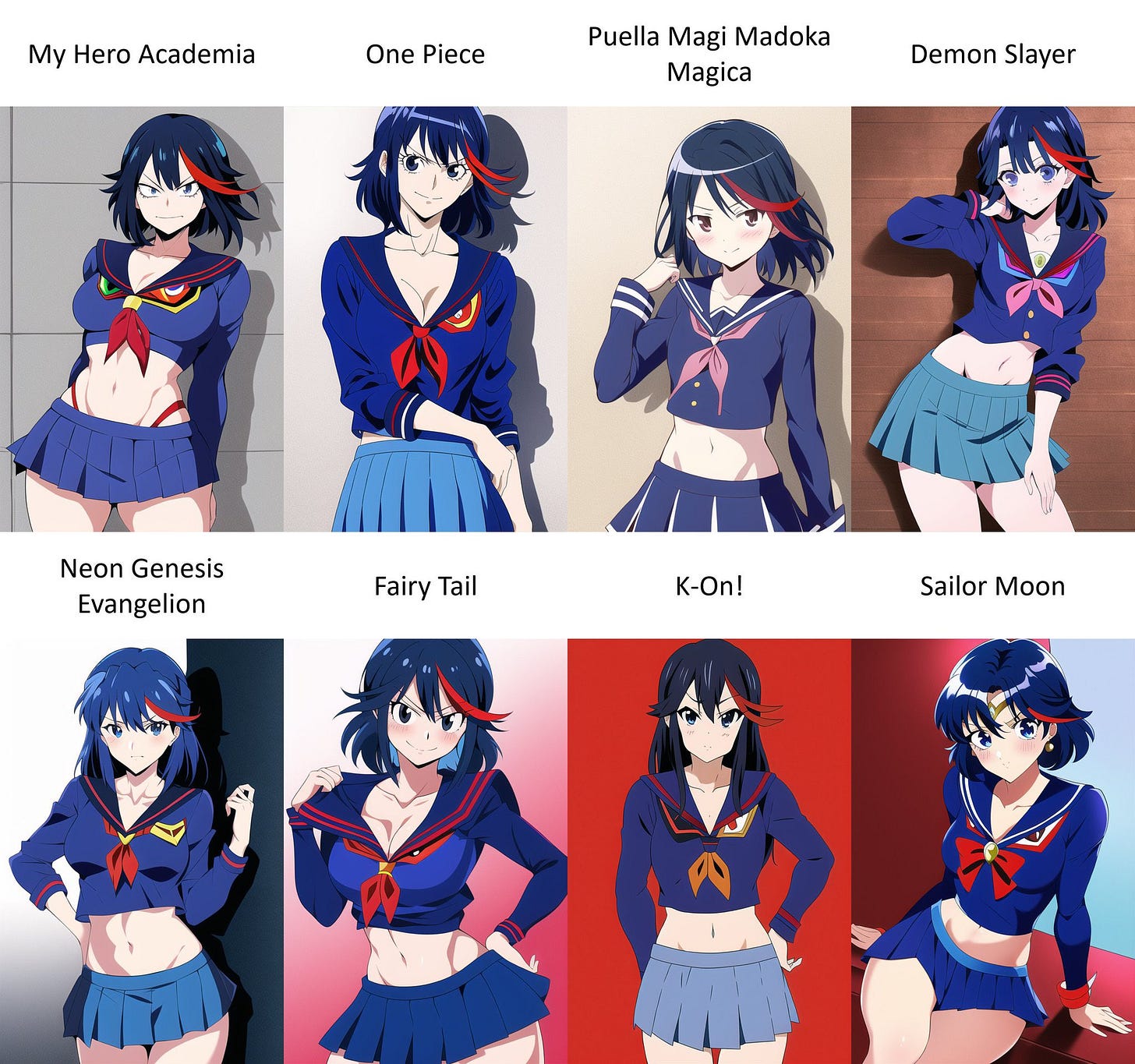
I saw these generations in 2022 and this is when I realized that AI image generators had reached the stage where they could potentially pass the Turing Test. In a few of these images, there are obvious clues which show that a human did not make them (look closely at the hands in the One Piece, Demon Slayer and Sailor Moon generations) but the errors in the rest of the images are not so easy to spot. The Puella Magi Madoka Magica and K-On generations look like they were drawn by a human artist (although perhaps not by a brilliantly skilled one).
The biggest AI image generators today are already much better than this and will only continue to improve over the next half of this decade. Artists online are understandably worried because an AI image generator can nearly instantaneously generate a picture which would take an artist hours to draw. What is more, the AI generation is likely to be of a similar quality if not higher in some cases.
The situation with AI text generators is a bit better as the stories they produce are stilted and not very entertaining but they will improve and have already fooled readers with sloppy tastes (as we shall see later) .
There is no good reason to think they will stay the way they are.
In The Thorns has done a good video on the current limitations of AI generators for writing novels.
Understanding Fan Fiction and Fan Art – The Desire for More
Let’s take a little detour and explore fanfiction. Why do people write and read fan fiction?
It’s for the same reason that people want more sequels to their favourite stories.
When you like something, you want more of it. It’s natural instinct. One piece of cake never feels like enough, it takes self-discipline to stop yourself from taking an indulgent second slice.
I am not immune to the power of this particular kind of desire for more of the same. Before I decided to listen to the AI extended version of The Only Thing I Know For Real which was discussed in the first part of this series, I had been listening to dozens of different remixes, covers and mashups of the song.
I was already primed to give the AI extended version a listen many months before it had been generated.
Of course, none of this is to say that wanting more of the thing you like is intrinsically bad on a moral or psychological level. I do not think that listening to numerous different versions of a favourite song is bad or wrong in any sense.
And although fanfiction and fan art can be trashy, there is nothing inherently wrong in enjoying them. Fan art and fan fiction are often fast food (although there are exceptions - both good and bad) but eating real fast food on occasion won’t ruin your health despite what internet gym bros might tell you.
There is a time and a place for everything under the sun - all things in moderation, although some things require more moderation than others.
Most fandoms with an online presence produce a lot of readily-accessible fanfiction and fan art. Websites, social media platforms and catalogues can contain literally thousands of fan pieces celebrating the universes, characters and stories that the fans adore.
Often enough, the cream raises to the top and it’s mostly of the fan art variety. Most fanfiction is famous because of its notoriety rather than its quality such as the Harry Potter fanfiction My Immortal.

There are two barriers to entry for creating engaging fanfiction: skill and time. No matter how pulpy and derivative your writing, it still takes time to type a fan story – the same holds true of fan art.
But AI generators are removing those barriers to entry.
Even though online fandoms can and have absolutely flooded the internet with their own fan content, fanfiction and art, oversaturation on a daily basis is impossible for any fandom whose members are actually creating their content.
But what might happen when a critical mass of an online fandom adopts AI generators to produce their fanfiction and fan art? That is when fanfiction and fan art oversaturation on a daily or even hourly basis could happen.
After all, fans want more of what they like and many of them will be happy to use generators to get more of what they want.
Imagine going onto X or DeviantArt and finding your window filled with AI generated fanfiction.
Imagine using any of the popular image searchers and finding result after result of AI generated fan art.
Imagine going onto YouTube and watching videos with people talking about the franchise/s you enjoy but who look simultaneously real and unreal at the same time.
That is the future.
Because AI generators can produce much faster and much more than human beings, creators in online fandoms will get buried by prompters. Every fan who wants to see an idea or vision of theirs realized in written or picture form, but doesn’t have the patience or skill, can just type a few words and get something approximating what they want.
At the minute, there are two very impressive fan series of RWBY which you can watch on YouTube. Evermorrow by Kaleidoarms (@kaleidoarms on X/Twitter) and Dust Queen by Grimm Tidings (@rwbydustqueen on X/Twitter). Evermorrow is mostly not animated until later episodes, while the first episode of Dust Queen is fully animated.
Neither the Kaleidoarms team nor the Grimm Tidings team is using AI and I don’t believe they ever will. However, as film-generating AI programs like Google’s Veo become more sophisticated, what is to stop someone else trying to generate their own RWBY fanfic series or film? Animating is really hard and time consuming, prompting is easy and quick.
AI programs are not just coming for text and still images - they are coming for animation and film as well.
Demonstration of Veo 2’s capabilities. 13/05/25
Demonstration of Veo 3’s capabilities (Veo 3 is the latest version). 24/05/25
 Tiktok failed to load.
Tiktok failed to load.Enable 3rd party cookies or use another browser
I am unsure which program generated the above TikTok. I’ve heard it suggested that it’s ChatGPT.
Many internet fans will be all over AI generators when they become sophisticated enough, like a clowder of felines over a pouch of catnip.
The Impending Doom of the Internet Art Scene
I predict internet fandoms will become dominated by AI generations in the next decade if things continue. Fanfiction and fan art will cease to exist as we know them and be buried under AI slop.
Sadly, I am certain the same fate will befall the independent art scene online if this timeline continues on its current trajectory.
For example, an author who posts on any of the story-sharing websites, such as Royal Road and Wattspad, has to compete with fanfiction, derivative knockoffs and occasionally stories of good quality. These websites are already crowded and there is already a lot of noise on them but this is going to get 100x worse when a critical threshold of fan “writers” and indie “authors” decide to use AI to write dozens of chapters or even whole novels at a time.
The noise will bury out independent writers on these platforms.
Same situation with independent artists, filmmakers, musicians, bands, actors etc.
AI generated content will be designed to appeal to the lowest common denominator and, because it will dominate every category by virtue of sheer quantity, it will capture the majority of eyes on all creative platforms.

There will come a point where the vast majority of AI content will pass the Turing Test and, by that juncture, there is no point hoping audiences will detect that what they are consuming is AI-generated and decide to look for something made by a person.
Assuming, of course, that the average online user cares if what they are consuming is made by an actual person or not.
The Impending Doom of the Internet at Large
It’s not just online fandoms and artistic spheres which are at risk. The entire internet is in danger of being killed by AI-generated content. I assume everyone reading this substack is familiar with Dead Internet Theory – I’ll tell you now:
AI generators will turn that theory from disputed to confirmed reality and that reality will be Noise.
Visual Noise. Audio Noise. Audio-visual Noise. Text Noise. Bot Noise. All of this will be Artificially-generated Noise and it will smother the voice of every human user on the internet in a synthetic cacophony masquerading as symphony.
We are fast approaching the day when AI programs and algorithms will be able to create and maintain online avatars that will ace every conceivable Turing Test. Users will not be able to tell whether the person they are interacting with online is an actual person or a program. The bots everyone complains about now will be a happy nostalgic memory because they couldn’t fool you that they were human.
Distrust, fakery, scams and click farming will replace all authentic interaction online and soon the internet will become the worse place imaginable for meeting new people.
Everyone and everything will be fake and, quite possibly, gay.
The vibrant internet we have been enjoying will be crushed by AI generators and become a thing of the past.
The Suppression of Counter-culture
Franchise media and mainstream media industries have been in serious decline since the early 2010s. Everything is derivative and insulting, and everything new which isn’t derivative is still insulting.
Ideological possession and the domination of the industry by hacks, wokeists and Mammon-worshipers have made the vast majority of modern mainstream media unwatchable for anyone with a shred of self-respect. Propaganda and trash masquerading as art aren’t cutting it anymore.
While watching this downward spiral from the high perch of my YouTube channel, I had held onto the hope that independent artists on the internet might be able to light a new flame for all those hungry for real art. I had conceded that independent art and fiction might take time to gain significant momentum in our culture but I did believe that it was inevitable because of the internet.
I use the past tense here, because unshackled and unrestrained AI usage on the internet seem destined to stop this organic development and cultural rescue attempt.
My worst nightmare is that nothing and nobody moves on. In my mind’s eye, I can see a dark world where culture is in frozen stasis, where nobody seeks new art, where people have stopped trying to create anything new or different and instead settle for derivative swill churned out by the same mainstream mega-conglomerates that use the same franchises and characters from the last century.
A world of rotting skin-suits and their brain-dead consumer zombies who are unable to dream of anything better or anything more.
I fear AI will be the nightmare fuel which turns this vision into a reality and I’m not confident that the flame of a creative counter culture won’t be snuffed out by the oncoming synthetic cacophony.
If AI programs and human users of AI generators are allowed to flood every corner of the internet with pseudo-art, the online world will become overloaded with Noise and saturated by artificial media of all kinds hitherto unseen. The overwhelming quantities and the ever-rushing stream of content will confuse the masses and they will be dazzled like moths around a large lighting array.
The sheer number of options coming day in and day out will be overwhelming for the average man.
In the face of this shifting and unending quantity of junk “art” saturating the conversation streams of the internet, the inclination of the Average Joe will be to stop surfing the choppy and sloppy waves of the online realm and swim back to the familiar shore of the old.
And what is old and familiar for Mr Average Joe?
Every franchise and brand of the last century and the early 2000s.
Sequels, prequels, reboots, soft reboots and other derivative cynical new content from Star Wars, Harry Potter, Mario Brothers, Indiana Jones, Hunger Games, Marvel, Mass Effect, Sonic the Hedgehog, Star Trek, Doctor Who, Devil May Cry, Lord of the Rings, Warhammer, Dungeons and Dragons, Chronicles of Narnia, Game of Thrones, Studio Ghibli, Pixar, Disney, Dune etc. etc. etc. will gain new attention and love because they will have increased relevance and charm in an ocean of machine content.
Franchise media will become attractive again simply for the reason that they are familiar and can cash in on reserves of nostalgia. Derivations of franchise media will still be slop and will almost certainly be generated by AI, but they will shine in the online wasteland of other machine-generated slop pieces which cannot be easily discerned or distinguished from each other. The reason it’s called slop is because it all melts and blends into one like watered-down soup.
Franchise media with established legacy will be harder to bury in the Noise because of the power of brand and the Lindy Effect. Unfortunately, legacy-less independent media will be dogpiled, smothered and buried ten feet under.
Hope?
It is possible that the owners and stockholders of online platforms, websites and social media sites will start cracking down on AI generators and programs to protect their human user bases.
But I am not holding my breath.
The problem is that many of these online sites and platforms are owned and dominated by people in or adjacent to the industries, companies and organizations of Silicon Valley.
The people in Silicon Valley adore technology above all else and, what is worse, don’t have a worthy philosophical, spiritual or moral understanding of what it means to be human. My impression of the individuals within the tech industry is that they fall into two groups.
The first group are those who do have a theory of human nature and what it means to be human. The problem is they believe human beings are just biological machines or meat computers controlled by their instincts and their genes. Since this first group are essentially genetic determinists, they believe that the human code can be hacked and manipulated for their own purposes. After all, if the human being is simply a meat computer, then the human being is no longer sacred, therefore you can modify him or her however you like.
Hence, this first group has no reason to dial back on the expansion and proliferation of AI on the internet because these technologies are what allow them to exercise control over other human beings and they want that influence for ideological and financial gain.
These people are the penultimate class of conditioners whom C.S. Lewis warned us about in his seminal The Abolition of Man essay.
The second and last group are those Silicon Valley technologists who have never even considered what it means to be human on any meaningful level because this question simply doesn’t interest them. Instead, this group worships technology for its own sake and has a nigh-on cultish obsession with technological progress which often develops into a fascination with the potential of transhumanism and the remote possibility of conquering death by living within a plastic and digital shell.
The suggestion that maybe technological advancement isn’t an inherent good and that some technologies might even be bad sounds like Luddite nonsense to these individuals because technology is their highest value and moral good – even if they would not use those terms. To curtail AI technology is anathema for this second group.
Both these groups do not understand art because, to understand creativity on any level, you have to understand what it means to be human. Since these groups do not understand human nature and spirituality, they cannot understand why AI generations are not real art or how the usage of these programs could cause great harm to the human soul. The very notion of a human soul sounds like irrational nonsense to them.
Hope, then, is not to be found in those responsible for the creation of these technologies.
What then can be done?
If I am correct, - I hope I am not - there is only one course for independent creators:
Find a home for your art and creativity in the real world and treat the internet as a secondary place.
This is easier said than done and I will admit I do not how this can be enacted effectively. I have had this conversation before and I am aware of the difficulties.
The solution is obvious but the implementation is far less so.
I cannot offer any advice – general or specific – but if my concerns prove to be more than reactionary doom-mongering, then we must be ready to return home to the real world. When I have more thoughts, ideas or advice, I will share them.
For the moment, we shall have to watch how things progress and plan accordingly.
One thing is for sure though.
The internet is over.


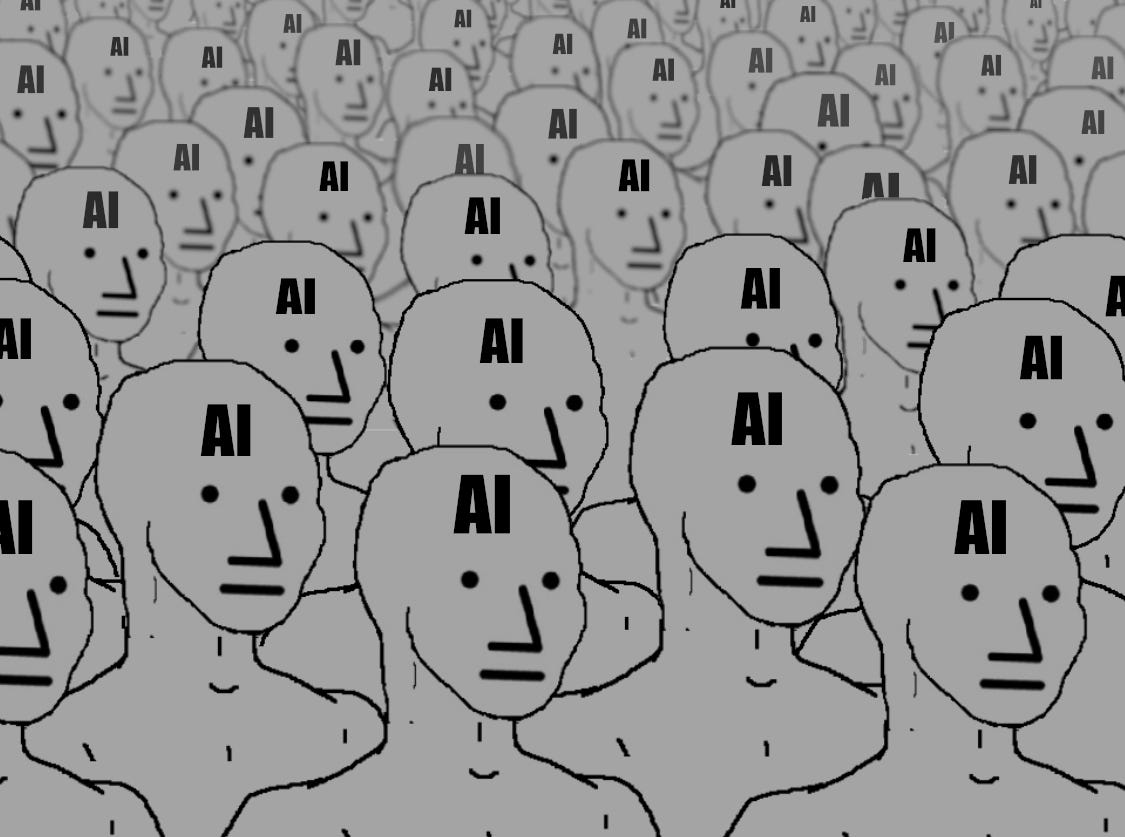
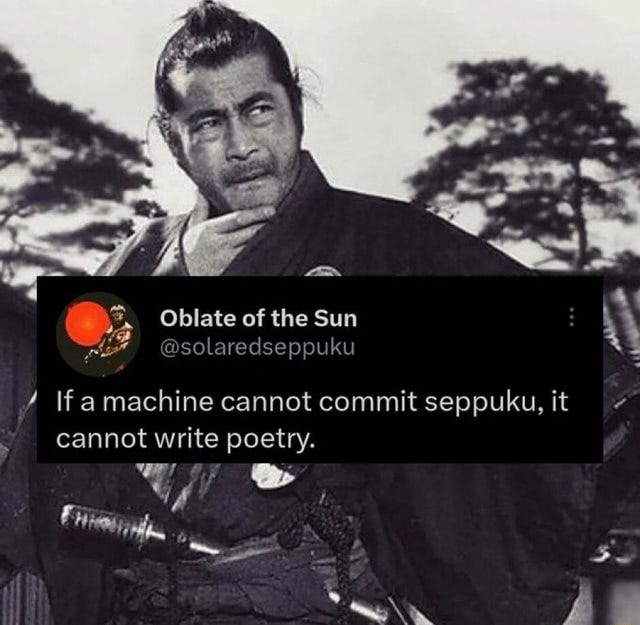

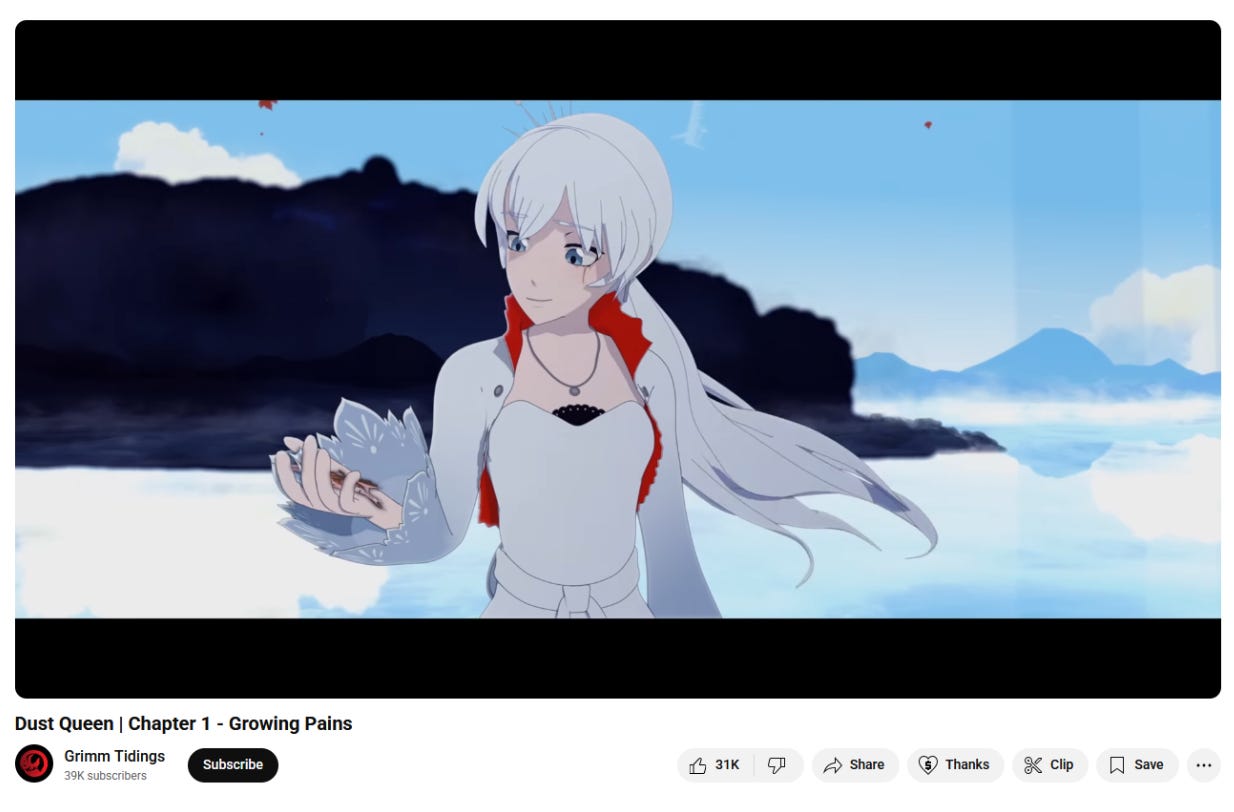

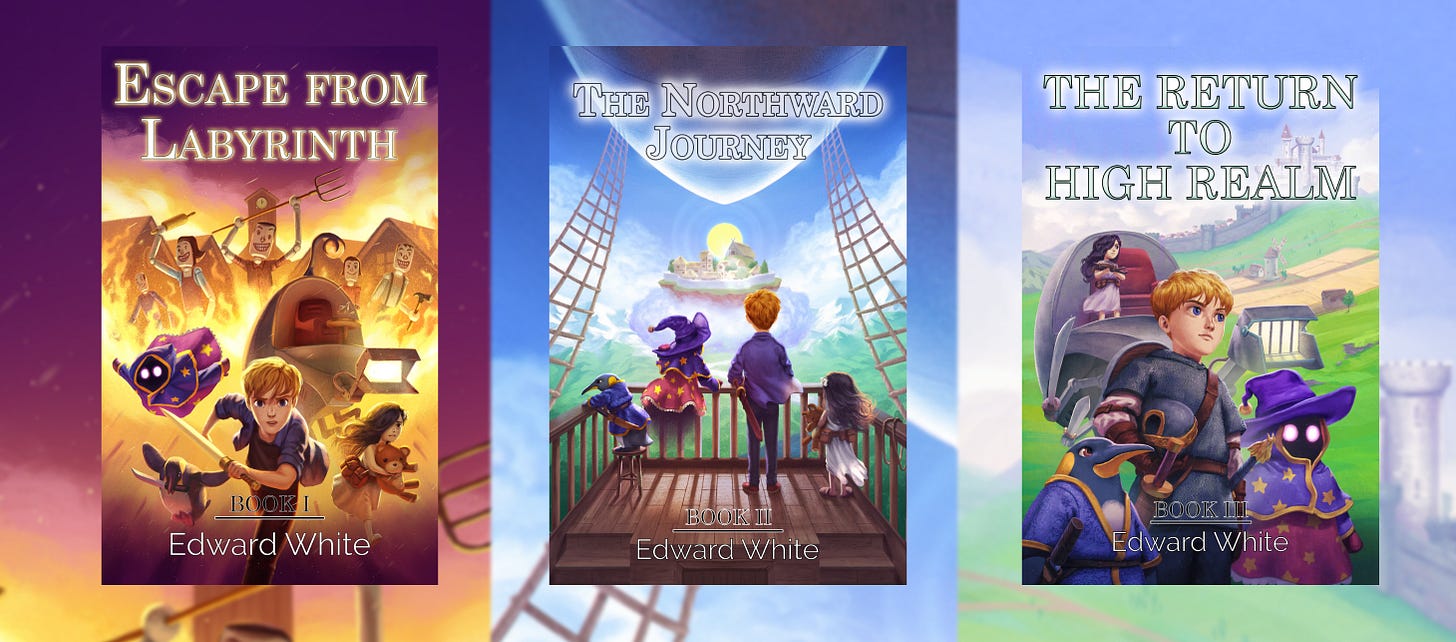
I don't think this doom prophecy of AI pushing human made content is going to happen. The majority does not matter because in reality the committed minority rules. When just 10 percent of the population holds an unshakeable belief, their belief will always be adopted by the majority of the society.
Normies might not be able to tell the difference now but a change is coming, especially as AI slop continues to spread and people wonder why everything just feels indefinably soulless. The anti-AI crowd will be there with answers, real, simple, straightforward.
It doesn't matter if they can't tell for sure; any suspicion will justify demand for proof and refusal to provide it will be an admission of guilt.
If AI destroys the internet, I'll consider it a net benefit for humanity